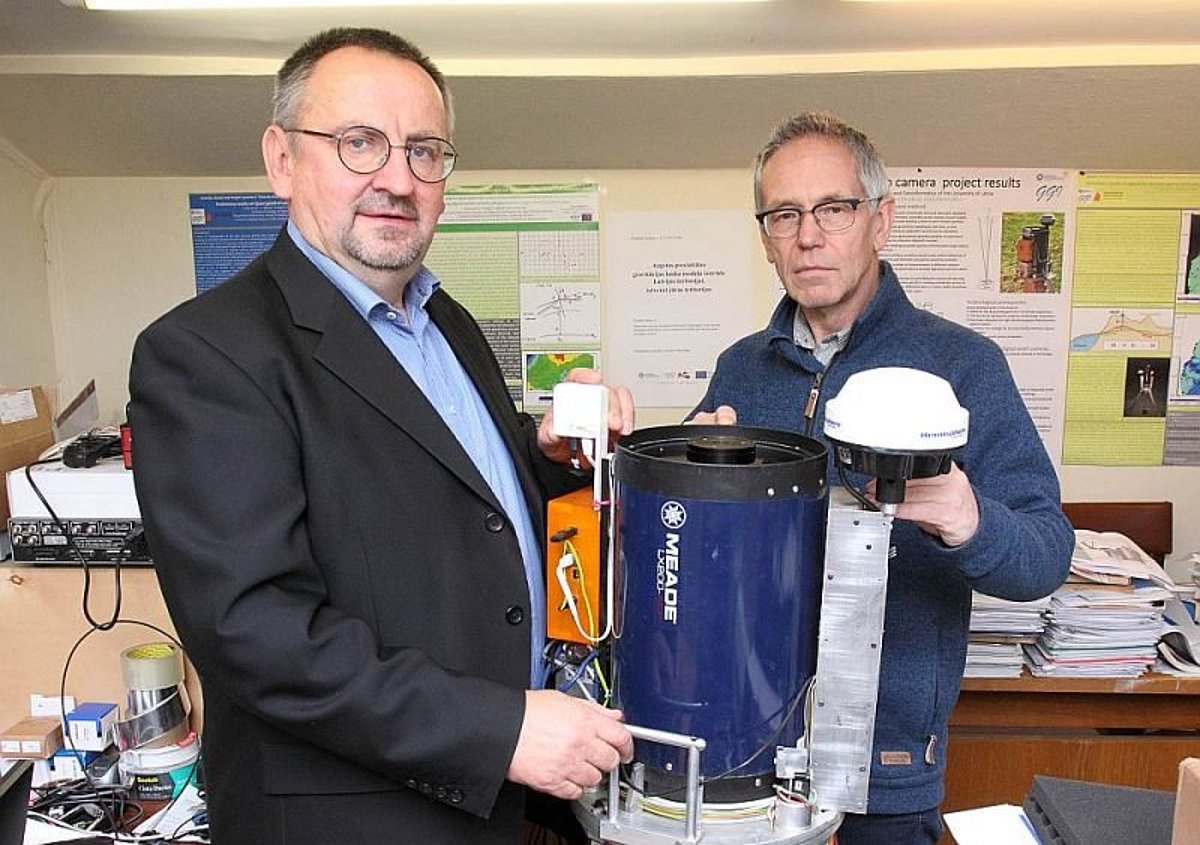
This instrument will enable to improve the knowledge of Earth gravitation properties to use global navigation satellite system (GNSS) spatial coordinate measurements in precision geodesy. There are also prospective applications in geology to localise gravitation anomalies and studies of structure. The invention has already attracted interest of foreign companies, and the first licence agreement has already been concluded for 100 000 euro, thus establishing a record of the UL.
Gunārs Silabriedis, the director of the institute and one of the invention’s authors, explains that zenith camera is one of very few astronomic instruments of its type in the world at present. The idea of its necessity has been conceived approximately 10 years ago.
“Developing of the camera has been made possible by recent progress of science and technology in several directions – digital imaging, global satellite navigation systems, electronic level gauge technologies, development of accurate astronomic star catalogues”, says G. Silabriedis. Combining these technologies in computer-operated, portative tool, enables a precise definition of geoid’s surface or continuation of sea level under the continent. Latvians are not the only ones to work on enhancing the precision of these measurements, – there are a few similar instruments in the world, however, the invention created by our scientists obviously has been recognised as outstanding.
“We have not advertised this invention anywhere. We are found through our publications. First we were addressed by a Mongolian company, and subsequently – by Americans, who would like to proceed without delay – they have given us a definite proposal, and want to conclude all the agreements in a blink of the eye. The device is to be delivered to them in March”, informed G. Silabriedis.
The device requires remote operation, as it is extremely sensitive – it will show the alterations generated by a car started in 20 m distance from the instrument. The only problem, since the measurements depend on the stars, the work can be carried out only at night, and the cloudiness cannot be regulated by anybody.
The invention has received a patent. Overall, the UL at present holds nine valid European patents and 23 patents of Latvia. As pointed out by the senior specialist of the UL Department of Communication and Innovation Māris Jansons, obtaining a patent is not a simple process and a patent by itself is not a guarantee of commercial success.
“Often patents are not commercial or economical, they have not been devised to achieve a particular goal, a result. Moreover, even if something is unique, it may not attract the interest of companies, which would result in its purchase. Good news – we can conclude a licence agreement. This agreement will also be concluded by the UL Institute of Geodesy and Geoinformatics, which holds both hardware and software, very much sought for by the American company, which offers a serious amount of money to obtain this invention, but we are reluctant to sell the invention in its entirety. Therefore we conclude the licence agreement defining their rights – there will be certain geographical limitations, as well as constraints with regard to multiplication of the appliance,” expounded M. Jansons.
He also pointed out that to this day, the UL has concluded several licence agreements with companies, for example, with “Madara Cosmetics” and pharmacy company “Grindex”, however, these agreements concern much smaller amounts of money, and the companies have purchased a product which has initially been developed for a definite purpose. However, M. Jansons emphasized, that the primary goal of the universities is not to commercialise anything, but to create new knowledge and scientists of excellence.
The achievement has been reflected both in printed and broadcasted media of Latvia.

 CONFERENCE
CONFERENCE